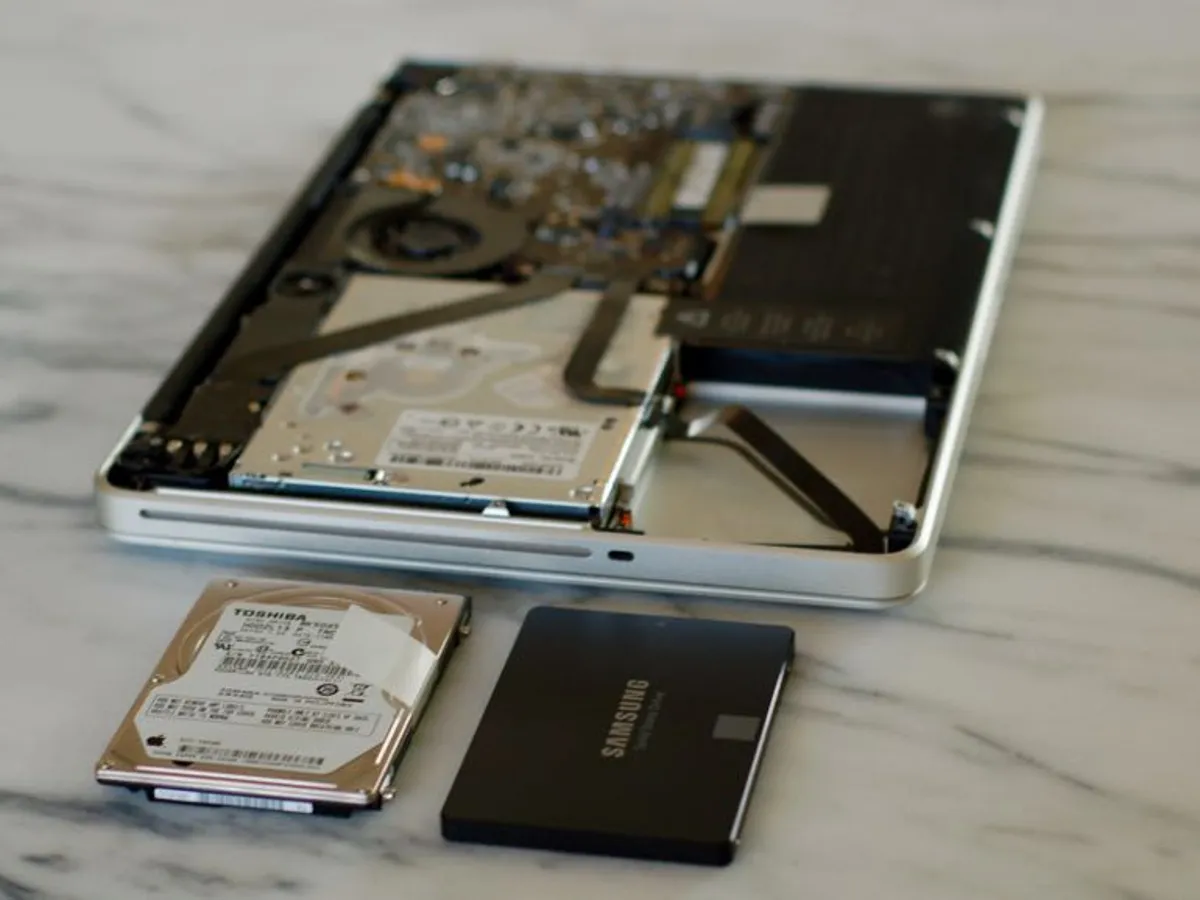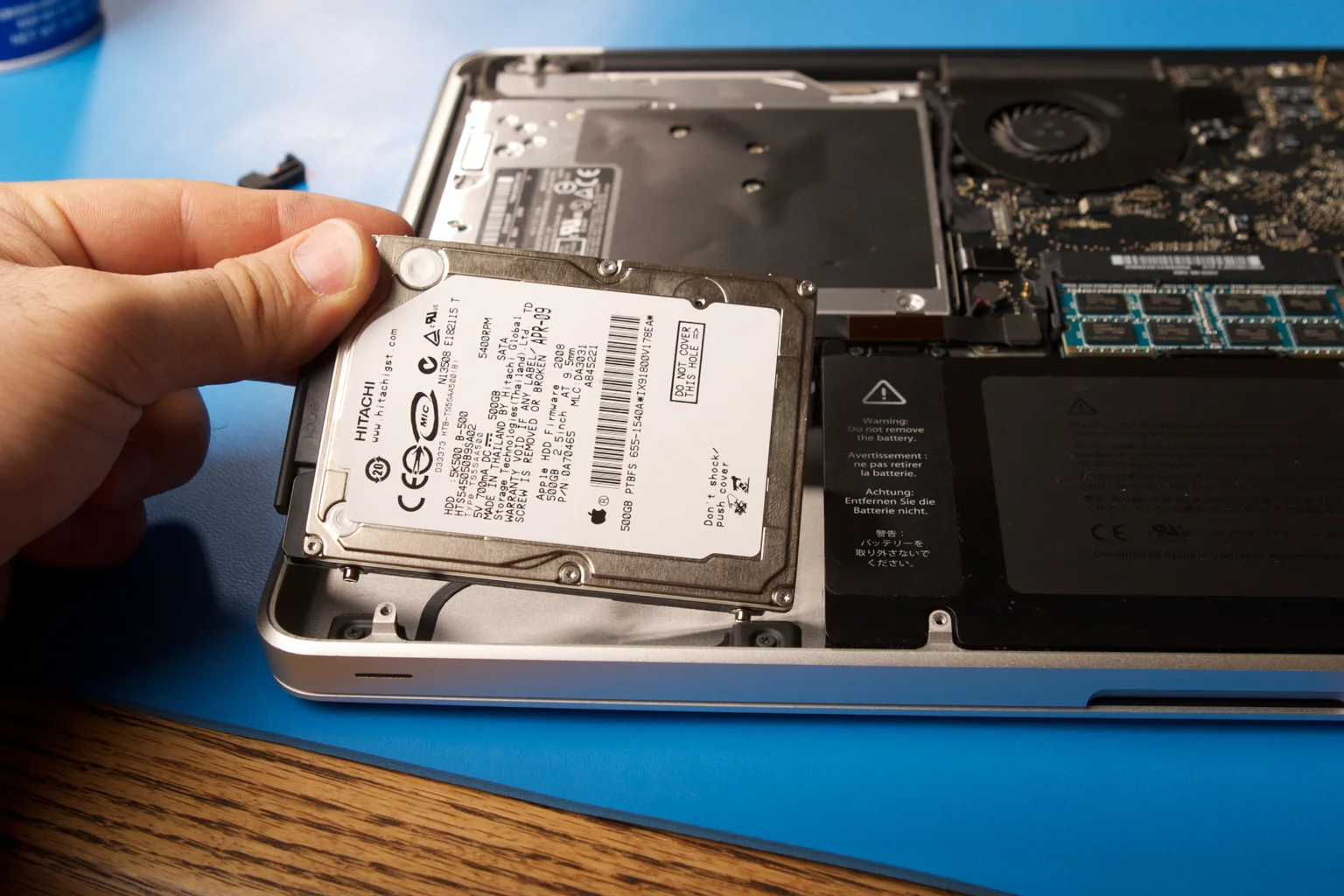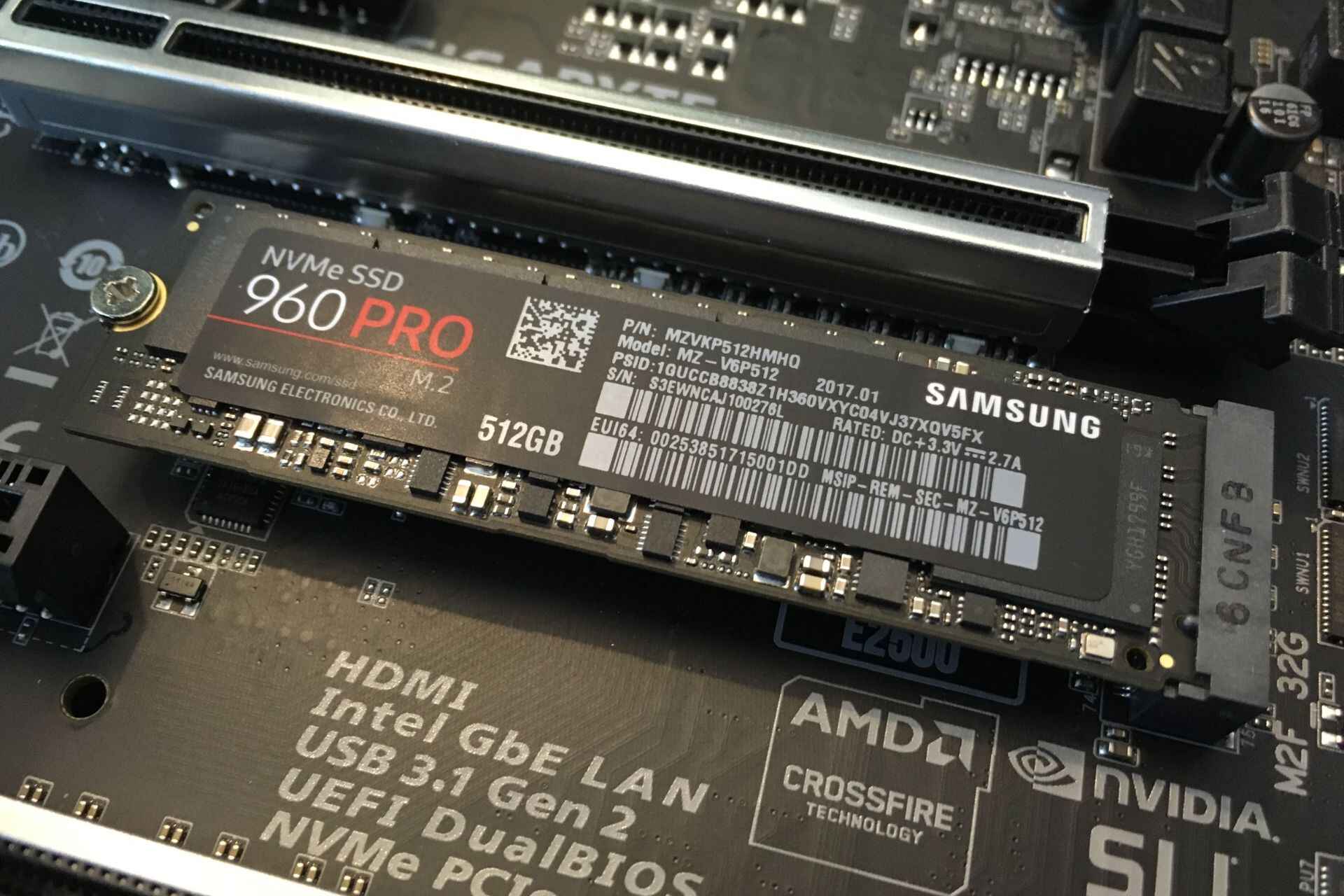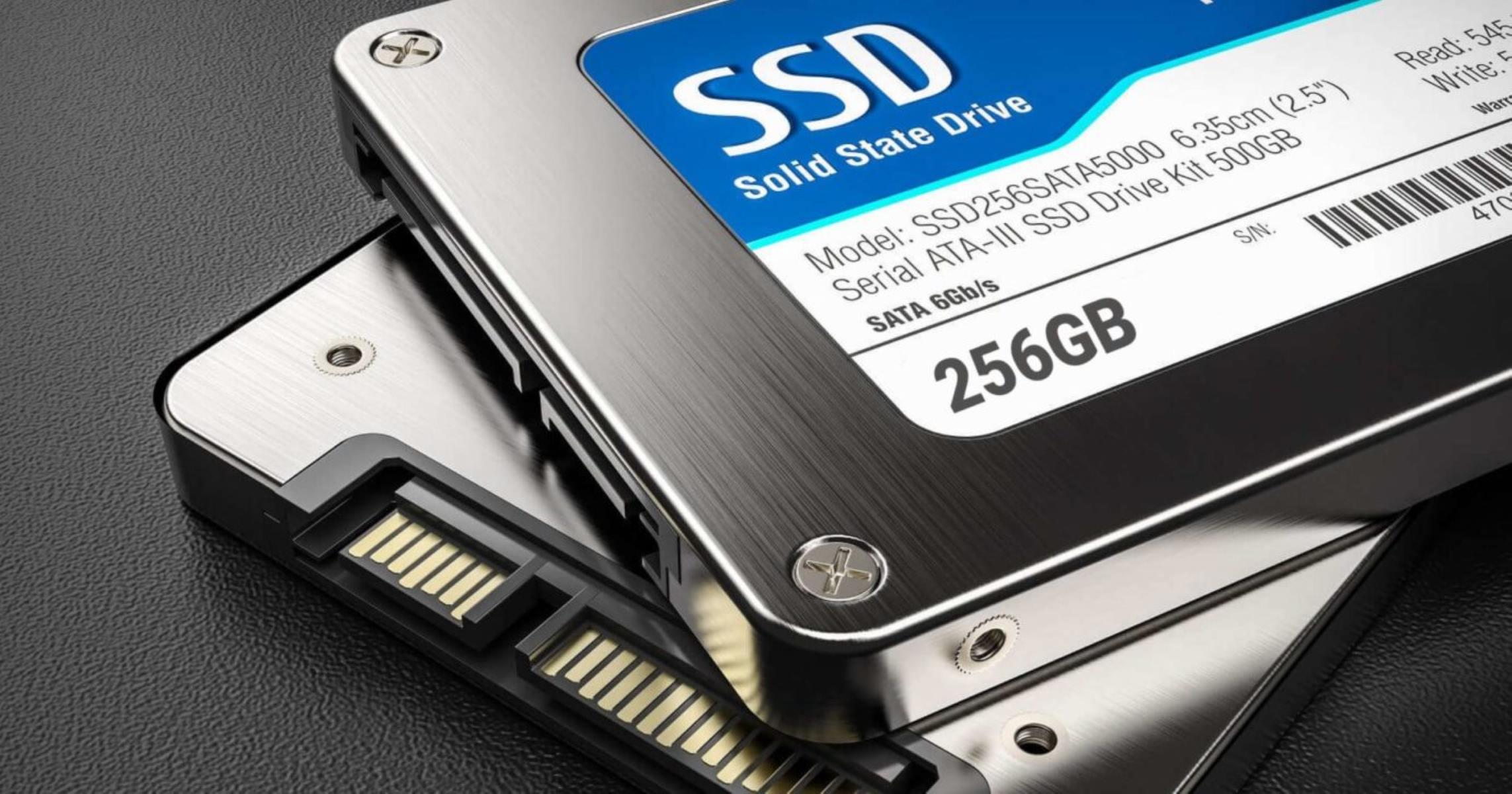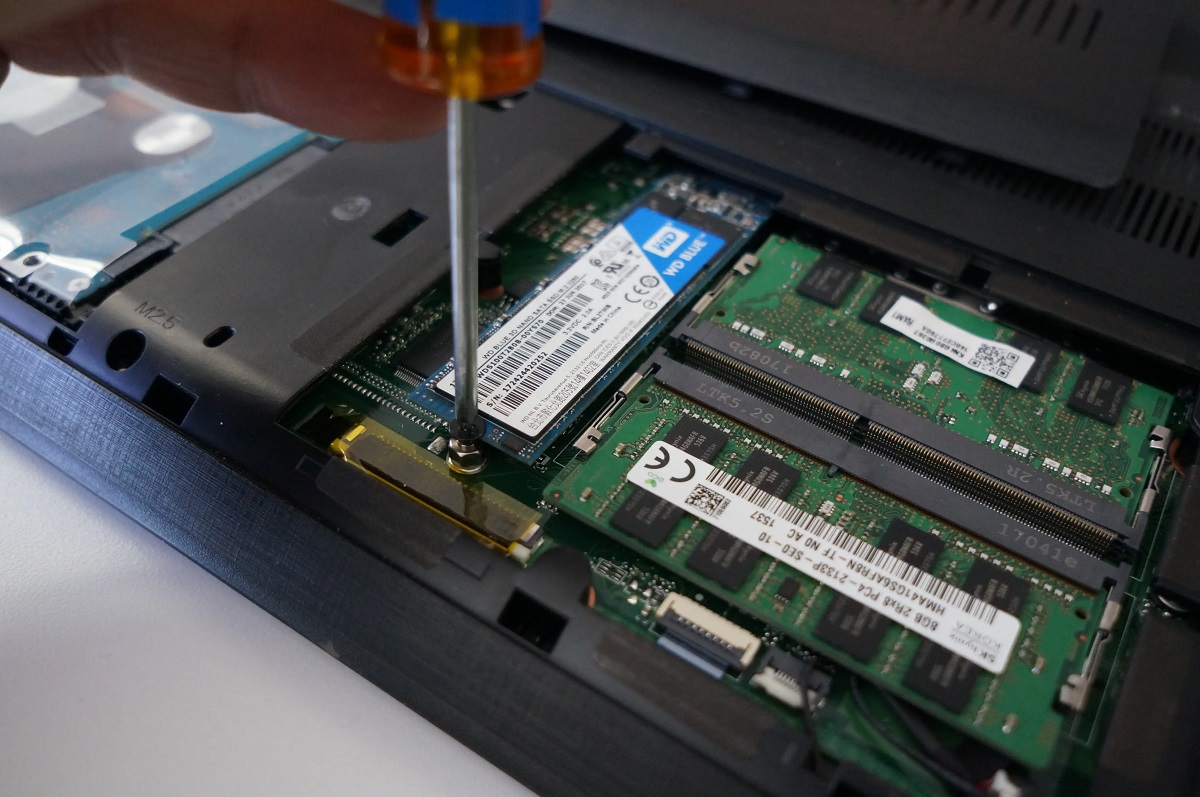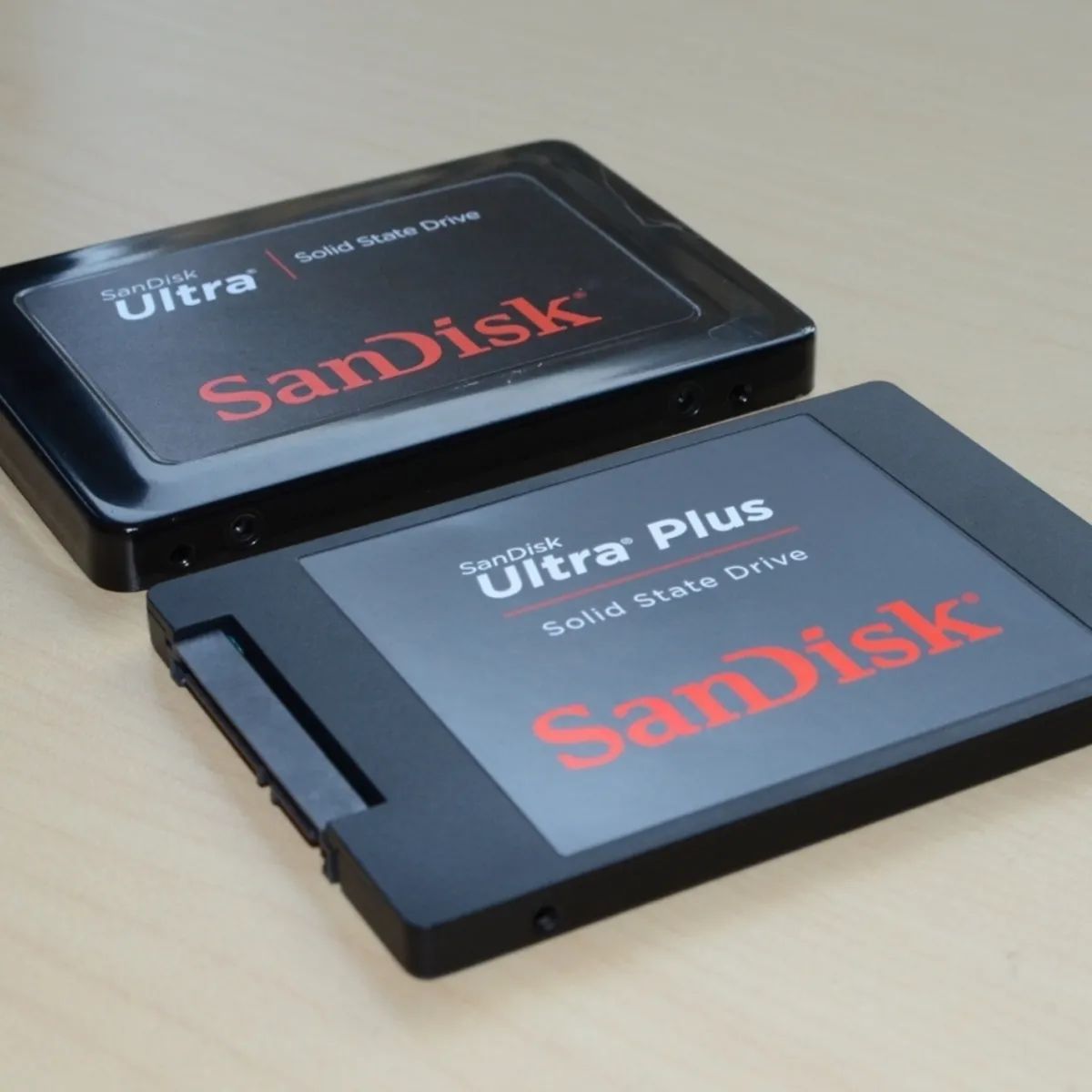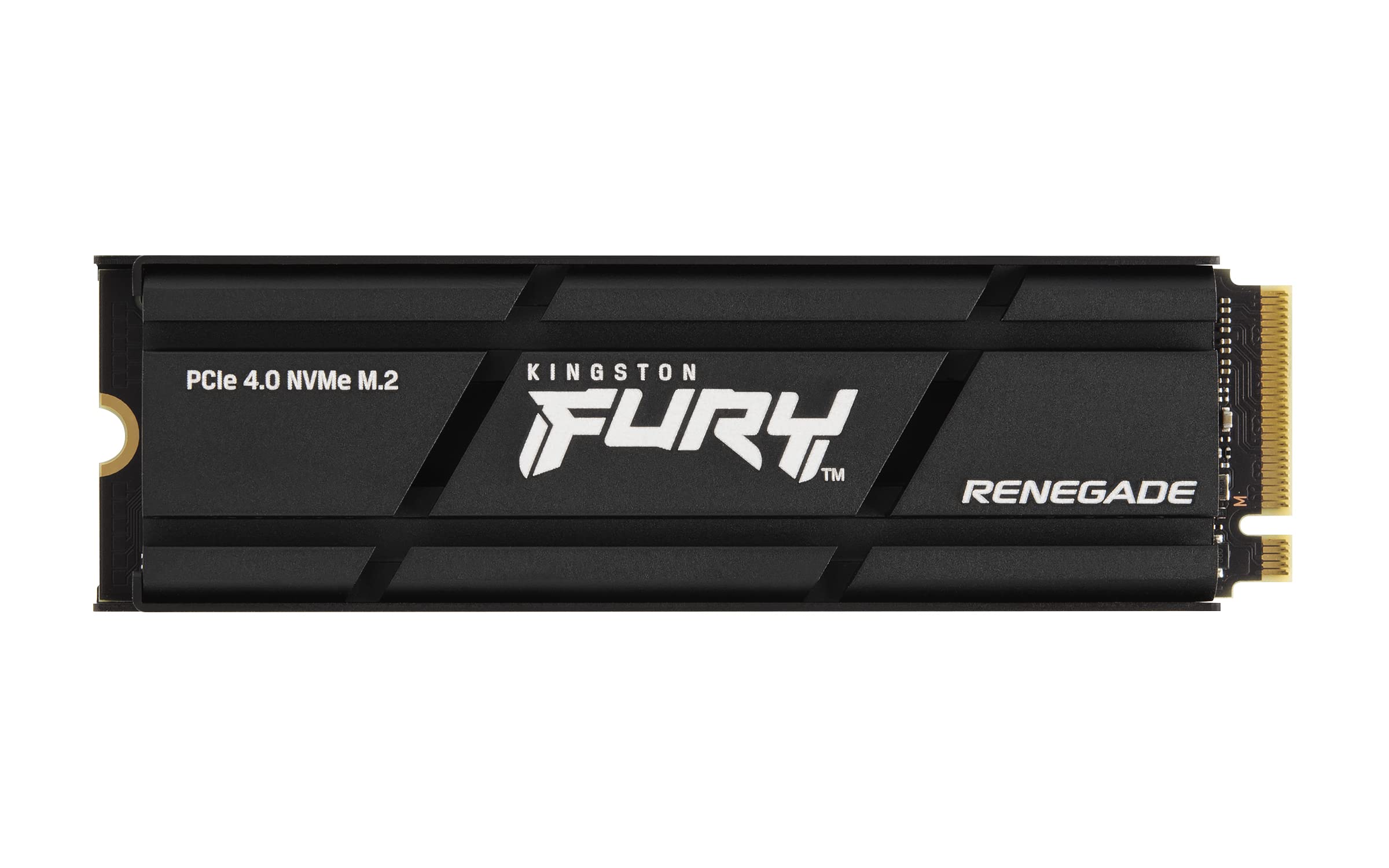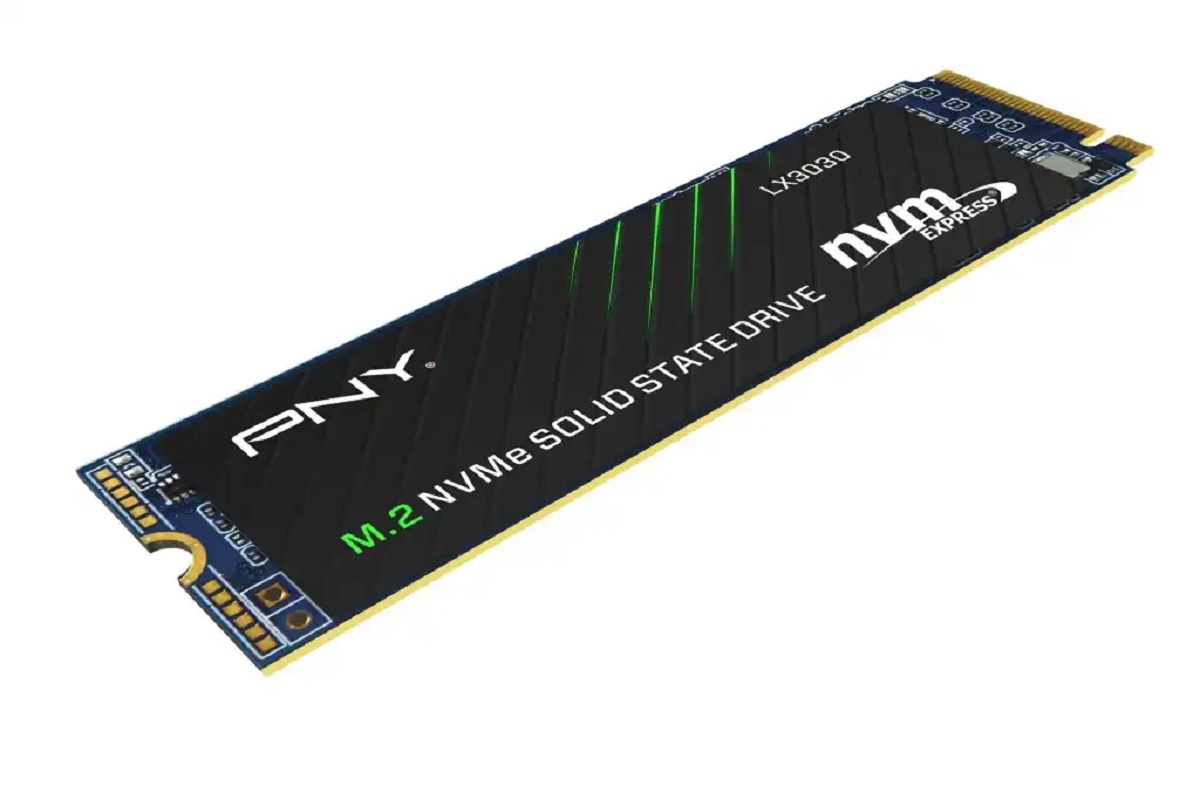Introduction
Welcome to the world of solid-state drives (SSDs) and the potential for enhancing the performance of your Mac. If you have been experiencing sluggishness or slow boot-up times, upgrading to an SSD might be the solution you have been searching for. SSDs offer faster read and write speeds, improved data transfer rates, and enhanced overall system responsiveness compared to traditional hard disk drives (HDDs).
In this article, we will explore the benefits of upgrading to an SSD on a Mac and discuss the factors that can affect the cost of such an upgrade. Additionally, we will delve into the different SSD options available for Mac users and help you determine the right choice for your specific requirements. Whether you are a professional seeking faster data processing or a casual user in search of a smoother computing experience, understanding the costs and benefits of upgrading to an SSD is crucial.
Upgrading to an SSD not only promises improved performance but can also extend the lifespan of your Mac. The absence of moving parts in SSDs eliminates the risk of mechanical failures, making them more durable and resistant to shocks compared to HDDs. Additionally, SSDs generate less heat and consume less power, resulting in a cooler and energy-efficient Mac.
Before diving into the costs associated with upgrading to an SSD on a Mac, it is important to note that the process can vary depending on your Mac model and its compatibility with different types of SSDs. Understanding the specifics of your Mac and the options available to you will help you make an informed decision when it comes to the upgrade.
Now, let’s explore the benefits of upgrading to an SSD on a Mac and outline the various factors that can impact the cost of such an upgrade.
Benefits of Upgrading to a Solid State Drive
Upgrading to a solid-state drive (SSD) offers numerous benefits that can significantly enhance the performance and overall user experience of your Mac.
The primary advantage of an SSD is its speed. Unlike traditional hard disk drives (HDDs) that rely on mechanical parts to read and write data, SSDs use flash memory to store and retrieve information. This results in faster access times, quicker boot-up speeds, and snappier application launches. Tasks that previously took minutes can now be completed in a matter of seconds, allowing you to work more efficiently and accomplish more.
Additionally, SSDs offer improved data transfer rates, which allows for faster file transfers and smoother multimedia playback. Whether you are editing high-resolution videos, working with large datasets, or playing graphics-intensive games, an SSD can handle the demands without any lag or stuttering.
An often-overlooked benefit of upgrading to an SSD is the enhanced durability and reliability it provides. Because SSDs have no moving parts, they are more resistant to physical shock and less susceptible to damage caused by accidental drops or vibrations. This makes them ideal for users who frequently travel or work in rugged environments.
Furthermore, SSDs generate less heat and consume less power compared to HDDs. This not only keeps your Mac cooler, but it also prolongs the battery life of your laptop. You can work for longer periods without having to constantly search for a power outlet, making SSDs a great choice for users who are constantly on the go.
Another advantage of upgrading to an SSD is the reduction in noise levels. Since SSDs do not have any moving parts, they operate silently. This is in stark contrast to HDDs, which can produce audible spinning and clicking sounds. With an SSD, you can enjoy a peaceful and quiet computing environment.
Finally, upgrading to an SSD can breathe new life into older Mac models. If you have been experiencing sluggishness with your aging Mac, an SSD can give it a much-needed boost, resulting in a noticeable improvement in performance. You can enjoy the benefits of faster speeds and improved responsiveness without having to invest in an entirely new Mac.
In summary, upgrading to a solid-state drive offers a multitude of benefits, including faster speeds, better durability, increased energy efficiency, reduced noise levels, and the ability to revive older Mac models. Now that we understand the advantages of an SSD, let’s explore the factors that can affect the cost of upgrading to one on a Mac.
Factors Affecting the Cost of Upgrading
While upgrading to a solid-state drive (SSD) can greatly improve the performance of your Mac, it is important to consider the various factors that can impact the cost of such an upgrade. Understanding these factors will help you make an informed decision and budget accordingly.
One of the primary factors that can affect the cost is the capacity of the SSD. SSDs come in a range of storage capacities, from 128GB to several terabytes. The higher the capacity, the more expensive the SSD will be. It is essential to assess your storage needs and consider the amount of data you currently have and anticipate having in the future.
Additionally, the brand and quality of the SSD can influence the cost. Well-known brands, such as Samsung, Crucial, and Western Digital, often come with a higher price tag due to their reputation for reliability and performance. While it may be tempting to opt for a cheaper, lesser-known brand, it is crucial to balance cost with quality to ensure a reliable and durable SSD.
The form factor of the SSD is another aspect to consider. Macs use different form factors, such as 2.5-inch SATA drives, M.2 drives, and PCIe/NVMe drives. Depending on your Mac model, you may need a specific form factor to ensure compatibility. In some cases, an adapter or converter may be required, which can add to the overall cost of the upgrade.
Furthermore, the speed of the SSD can impact the cost. SSDs with faster read and write speeds generally come at a higher price point. However, it is important to note that while faster speeds can provide a performance boost, the difference in real-world usage may not be as noticeable for average users. Assess your usage patterns and determine if the additional cost for higher speed is justified based on your specific needs.
The warranty provided by the manufacturer is another consideration when evaluating the cost of the upgrade. SSDs with longer warranties often come with a higher price tag. However, a longer warranty can provide peace of mind and protection against potential failures or issues.
In some cases, the cost of the SSD itself may not be the only expense to consider. If you are not confident in your ability to install the SSD on your own, professional installation services may be required. The cost of professional installation can vary depending on the provider and your location. However, it is important to weigh the added cost against the potential risks and complexities involved in performing the installation yourself.
Lastly, it is crucial to factor in any additional accessories or peripherals that may be required for the upgrade. This could include cables, brackets, or adapters, depending on your specific Mac model and the SSD you choose.
In summary, several factors can influence the cost of upgrading to an SSD on a Mac. These include the capacity, brand and quality, form factor, speed, warranty, professional installation, and additional accessories. By considering these factors, you can make an informed decision that aligns with your budget and requirements.
Different SSD Options for Mac
When it comes to choosing a solid-state drive (SSD) for your Mac, there are several options available to suit different needs and budgets. Understanding the different types of SSDs and their features will help you make an informed decision and find the right fit for your Mac.
One of the most common types of SSDs for Mac is the 2.5-inch SATA SSD. These SSDs are designed to fit into the standard SATA drive bay found in most Mac models. They offer a good balance of performance, compatibility, and affordability. If your Mac has a traditional hard disk drive (HDD), upgrading to a 2.5-inch SATA SSD is relatively straightforward, as it can be installed in the same location.
If you have a newer Mac model, you may have the option to upgrade to an M.2 SSD. M.2 SSDs are smaller in size and connect directly to the motherboard, offering faster data transfer speeds compared to SATA SSDs. However, it is important to check your Mac’s compatibility with M.2 SSDs, as not all models support this form factor.
For users who want the highest performance and speed, PCIe/NVMe SSDs are the top choice. These SSDs utilize the PCIe interface, which enables even faster data transfer rates than M.2 and SATA SSDs. However, it is essential to ensure that your Mac supports PCIe/NVMe SSDs before considering this option.
When selecting an SSD for your Mac, it is vital to choose a reputable brand known for their reliability and performance. Brands such as Samsung, Crucial, and Western Digital are well-regarded in the industry and offer a wide range of SSD options to suit different Mac models and user requirements.
Another consideration when choosing an SSD is the storage capacity. SSDs come in various sizes, ranging from 128GB to several terabytes. Assess your storage needs and consider factors such as the amount of data you currently have and anticipate having in the future. It is also worth noting that larger capacity SSDs tend to be more expensive.
Some SSDs come with additional features like data encryption, power-loss protection, and error correction algorithms. These features can provide added security and stability to your data. Consider your specific needs and prioritize the features that are most important to you when selecting an SSD.
Finally, it is worth mentioning that there are several reliable online and physical retailers where you can purchase SSDs for your Mac. These include Apple’s official website, authorized Apple resellers, electronics stores, and online marketplaces. Ensure that you purchase from a reputable source to guarantee the authenticity and quality of the SSD.
In summary, there are various SSD options for Mac users, including 2.5-inch SATA SSDs, M.2 SSDs, and PCIe/NVMe SSDs. Consider factors such as compatibility, performance, storage capacity, brand reputation, and additional features when choosing the right SSD for your Mac. By selecting a suitable SSD, you can enjoy improved speed, reliability, and overall performance on your Mac.
Determining the Right SSD for Your Mac
Choosing the right solid-state drive (SSD) for your Mac can greatly impact its performance and overall user experience. Considering several factors will help you determine the best SSD option for your specific Mac model and requirements.
The first step in determining the right SSD for your Mac is to identify its compatibility. Not all Mac models are compatible with every type of SSD. Check the specifications and documentation of your Mac to determine which form factors (e.g., 2.5-inch SATA, M.2, PCIe/NVMe) are supported. This will narrow down your options and ensure a successful installation.
Next, consider the storage capacity that best suits your needs. Evaluate your current and anticipated future storage requirements to determine the ideal capacity for your SSD. If you work with large multimedia files or regularly use resource-intensive applications, opting for a higher capacity SSD will ensure that you have ample space for your files and programs.
Take into account the performance requirements of your Mac. Determine if you need an SSD with fast read and write speeds or if a standard SSD will suffice for your usage patterns. If you frequently perform tasks that involve large file transfers, video editing, or gaming, a high-performance SSD with faster data transfer rates may be beneficial. However, for average daily usage, a standard SSD can still provide a significant improvement over traditional hard disk drives (HDDs).
Consider the endurance rating of the SSD. Endurance refers to the total amount of data that can be written to the SSD before its performance begins to degrade. SSDs with higher endurance ratings are typically more expensive but also more durable. Evaluate your usage patterns and determine if you require an SSD with a higher endurance rating, especially if you perform frequent, high-volume data writes.
In addition to performance and compatibility, it is crucial to consider the warranty and customer support provided by the SSD manufacturer. Opting for a reputable brand that offers a solid warranty can provide you with peace of mind, knowing that you are covered in case of any issues or failures with your SSD.
Take your budget into account when determining the right SSD for your Mac. Set a realistic budget and consider the options available within that range. While it can be tempting to opt for the highest-performing and largest-capacity SSD available, ensure that it aligns with your budgetary constraints and the specific needs of your Mac.
Lastly, read reviews and gather information from reputable sources when selecting an SSD. Look for feedback from other Mac users who have upgraded to the SSD options you are considering. This will provide insights into the real-world performance, reliability, and compatibility of the SSDs. Online forums, technology publications, and trusted review websites are valuable resources.
In summary, determining the right SSD for your Mac requires considering compatibility, storage capacity, performance requirements, endurance rating, warranty, and customer support. Additionally, take into account your budget and gather information from reliable sources to make an informed decision. By choosing the right SSD, you can unlock the full potential of your Mac and enjoy a smoother, faster, and more reliable computing experience.
Costs of SSD Upgrades for Different Mac Models
The cost of upgrading to a solid-state drive (SSD) on a Mac can vary depending on the specific Mac model you own. Different Mac models have different requirements, compatibility, and installation procedures, which can ultimately impact the overall cost of the upgrade.
For older Mac models with replaceable storage, such as the MacBook Pro (2012-2015) or the MacBook Air (2010-2017), the cost of upgrading to an SSD can range from $100 to $300, depending on the capacity and brand of the SSD. These models typically require a 2.5-inch SATA SSD, which is readily available and generally more affordable compared to newer form factors like M.2 or PCIe/NVMe SSDs.
On the other hand, for newer Mac models that feature soldered or proprietary storage, such as the MacBook Pro (2016 and onwards) or the MacBook Air (2018 and onwards), the cost of upgrading the SSD is typically higher. These models often require specialized SSDs designed specifically for the Mac model, which tend to be more expensive and sometimes harder to find. In these cases, the cost of upgrading can range from $200 to $800, depending on the capacity and brand.
It is worth noting that the cost of the SSD itself is not the only factor to consider. If you are not comfortable performing the upgrade yourself, you may need to factor in the cost of professional installation. Depending on your location and the service provider, professional installation can cost anywhere from $50 to $150. Choosing professional installation ensures that the upgrade is done correctly and minimizes the risk of damaging your Mac during the process.
Additionally, consider the cost of any necessary adapters or connectors. Some Mac models may require specific adapters to ensure compatibility with certain SSD form factors. These adapters can range from $10 to $50, depending on the brand and functionality required.
Overall, the costs of SSD upgrades for different Mac models can vary significantly depending on factors such as the model’s age, storage type, compatibility, and the brand and capacity of the SSD. It is recommended to research the specific requirements of your Mac model and compare prices from different retailers or service providers to find the most cost-effective option that meets your needs.
Lastly, it is important to consider the long-term benefits that upgrading to an SSD can provide. The improved performance, faster boot-up times, and enhanced overall user experience make the investment worthwhile for many Mac users. Not only will you benefit from increased speed and responsiveness, but also from the durability and energy efficiency that SSDs offer.
In summary, the cost of SSD upgrades for different Mac models can vary based on the model’s compatibility, storage type, and required form factor, among other factors. It is essential to consider the cost of the SSD itself, professional installation (if needed), and any additional adapters or connectors required for the upgrade. By weighing these costs against the long-term benefits, you can make an informed decision that suits both your budget and your Mac’s upgrade needs.
DIY vs. Professional Installation: Which is More Cost-Effective?
When it comes to upgrading the solid-state drive (SSD) in your Mac, you have the option to either perform the installation yourself (DIY) or hire a professional to do it for you. Both approaches have their advantages and disadvantages, and the cost-effectiveness can vary depending on your specific circumstances.
Performing the SSD upgrade yourself can often be more cost-effective, especially if you have experience working with computer hardware or are comfortable following online tutorials and guides. By opting for the DIY route, you can save on the cost of professional installation services, which typically range from $50 to $150. Additionally, if you already have the necessary tools or adapters, you can avoid any additional expenses associated with purchasing these items.
Furthermore, choosing to perform the upgrade yourself allows you to have full control over the entire process. You can choose the specific SSD brand and capacity based on your needs and budget, without any limitations imposed by a professional installer. Additionally, you can take pride in completing the upgrade on your own and gaining valuable knowledge and experience in the process.
However, it is important to consider the potential risks and challenges associated with DIY installation. If you are not confident in your technical abilities or have limited experience with computer hardware, there is a risk of damaging your Mac during the installation process. Repairing or replacing damaged components can be costly, negating any potential savings from the DIY approach. Additionally, if your Mac is still under warranty, opening it up and performing the upgrade yourself may void the warranty, which could have future consequences in case of any issues.
Hiring a professional to install the SSD can be a convenient and hassle-free option, especially if you prefer to have an experienced technician handle the installation. They have the necessary expertise and tools to ensure a proper and secure installation, minimizing the risk of damage to your Mac. Additionally, professional installation often comes with a guarantee or warranty, providing peace of mind in case of any issues with the upgrade.
However, professional installation services come at an additional cost. Depending on your location and the service provider, the cost for professional installation can range from $50 to $150. When considering this cost, it is important to assess its value against the potential risks and complexities involved in performing the installation yourself. For many users who are not confident in their technical skills or do not have the time and patience to undertake the upgrade, professional installation can provide a worthwhile investment.
In summary, determining whether DIY or professional installation is more cost-effective for SSD upgrades depends on your individual circumstances. DIY installation can be cost-effective if you are experienced and confident in your technical abilities, and it allows for greater control over the process. However, if you lack expertise or prefer the convenience and assurance of professional installation, hiring a technician can be a worthwhile investment, despite the additional cost. Consider your abilities, budget, and preferences when making a decision, and weigh the potential risks and benefits of each option.
Additional Costs to Consider
When planning to upgrade the solid-state drive (SSD) in your Mac, it is important to consider additional costs beyond the price of the SSD itself. These extra expenses can vary depending on your specific needs and circumstances, and being aware of them will help you budget accurately for the upgrade.
One common additional cost to consider is the cost of data migration or backup. When upgrading to a new SSD, you will need to transfer your data from the old drive to the new one. If you are comfortable performing the data migration yourself, there may be no additional cost. However, if you prefer to use a specialized migration software or rely on professional data migration services, there may be a fee associated with these options. Depending on the complexity of your data and the size of the transfer, the cost can range from free to around $100.
Another potential cost to be mindful of is the need for additional storage space. When upgrading to a new SSD, you may find it necessary to purchase additional external storage, such as an external hard drive or cloud storage, to accommodate any data that you cannot fit on the new SSD. This is especially relevant if you are downgrading in capacity or have a vast amount of data that exceeds the capacity of the new SSD. The cost of these additional storage options can vary depending on the capacity and provider you choose.
If you opt for professional installation or data migration services, it is important to account for the associated costs. Professional installation services can range from $50 to $150, depending on your location and the service provider. Similarly, professional data migration services can cost anywhere from $50 to $200 depending on the complexity of the data and the size of the transfer. While these services provide convenience and expertise, it is essential to factor in these costs when budgeting for the SSD upgrade.
Lastly, consider any necessary accessories or peripherals that may be required for the SSD upgrade. This could include items such as cables, brackets, or adapters. The cost of these accessories can vary depending on your specific Mac model and the SSD you choose. While these costs are generally minimal, they are important to consider to ensure a successful and hassle-free installation.
Overall, the additional costs to consider when upgrading your Mac’s SSD include data migration or backup services, the need for additional storage space, professional installation or data migration services, and any necessary accessories or peripherals. Understanding these potential expenses will help you budget effectively for the upgrade and ensure a smooth transition to your new SSD.
Conclusion
Upgrading to a solid-state drive (SSD) can significantly enhance the performance of your Mac, providing faster speeds, improved reliability, and an overall smoother user experience. However, it is important to consider various factors when planning for an SSD upgrade.
We have explored the benefits of upgrading to an SSD on a Mac, including faster boot-up times, improved data transfer rates, enhanced durability, and increased energy efficiency. Understanding these advantages can help you make an informed decision about whether an SSD upgrade is right for you.
Factors such as compatibility, storage capacity, performance requirements, endurance rating, warranty, and budget play a crucial role in determining the right SSD for your Mac. By carefully considering these factors, you can choose an SSD that meets your specific needs and provides the best performance and value for your money.
The cost of upgrading to an SSD can vary depending on the specific Mac model, the capacity and brand of the SSD, and whether you choose to perform the installation yourself or hire a professional. Evaluating these costs and weighing them against the potential benefits is essential when budgeting for the upgrade.
Additional costs to consider include data migration or backup services, the need for additional storage space, professional installation or data migration services, and any necessary accessories or peripherals. Being aware of these additional expenses will ensure that you have a comprehensive understanding of the total cost of the SSD upgrade.
Whether you choose to perform the upgrade yourself or opt for professional installation, upgrading to an SSD can breathe new life into your Mac, enhancing its performance and extending its lifespan. With faster speeds, improved reliability, and increased storage capacity, you can enjoy a more efficient and enjoyable computing experience.
In conclusion, upgrading to a solid-state drive on a Mac is a worthwhile investment that can transform your Mac’s performance. By considering the benefits, factors affecting the cost, and additional expenses, you can make an informed decision and take the necessary steps to upgrade your Mac’s storage to an SSD.







